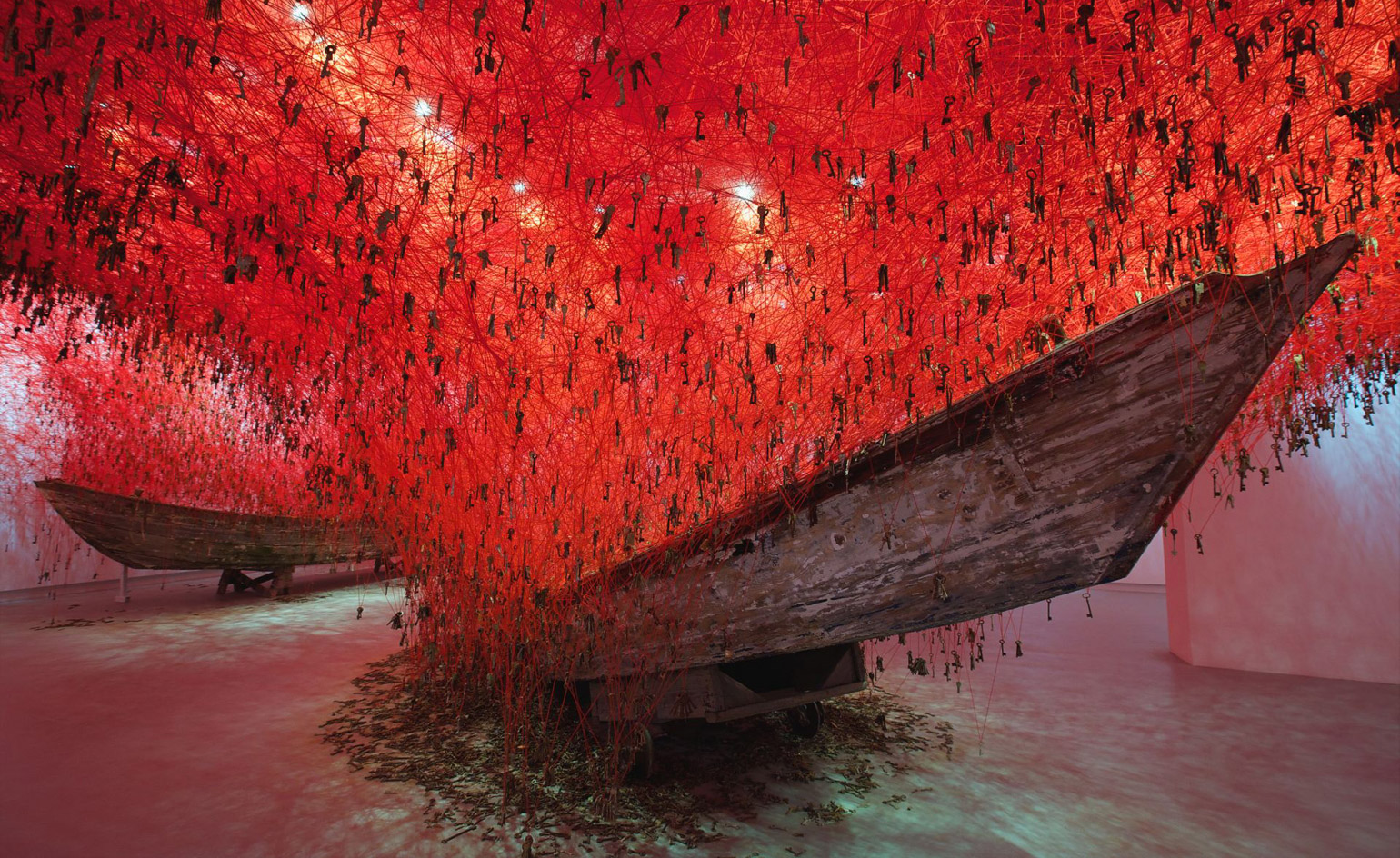At home with artist Chiharu Shiota
In our ongoing series, we go home, from home, with artists finding inspiration in isolation. We catch up this week with Japanese artist Chiharu Shiota on creating art with her body, and the past lives of found objects
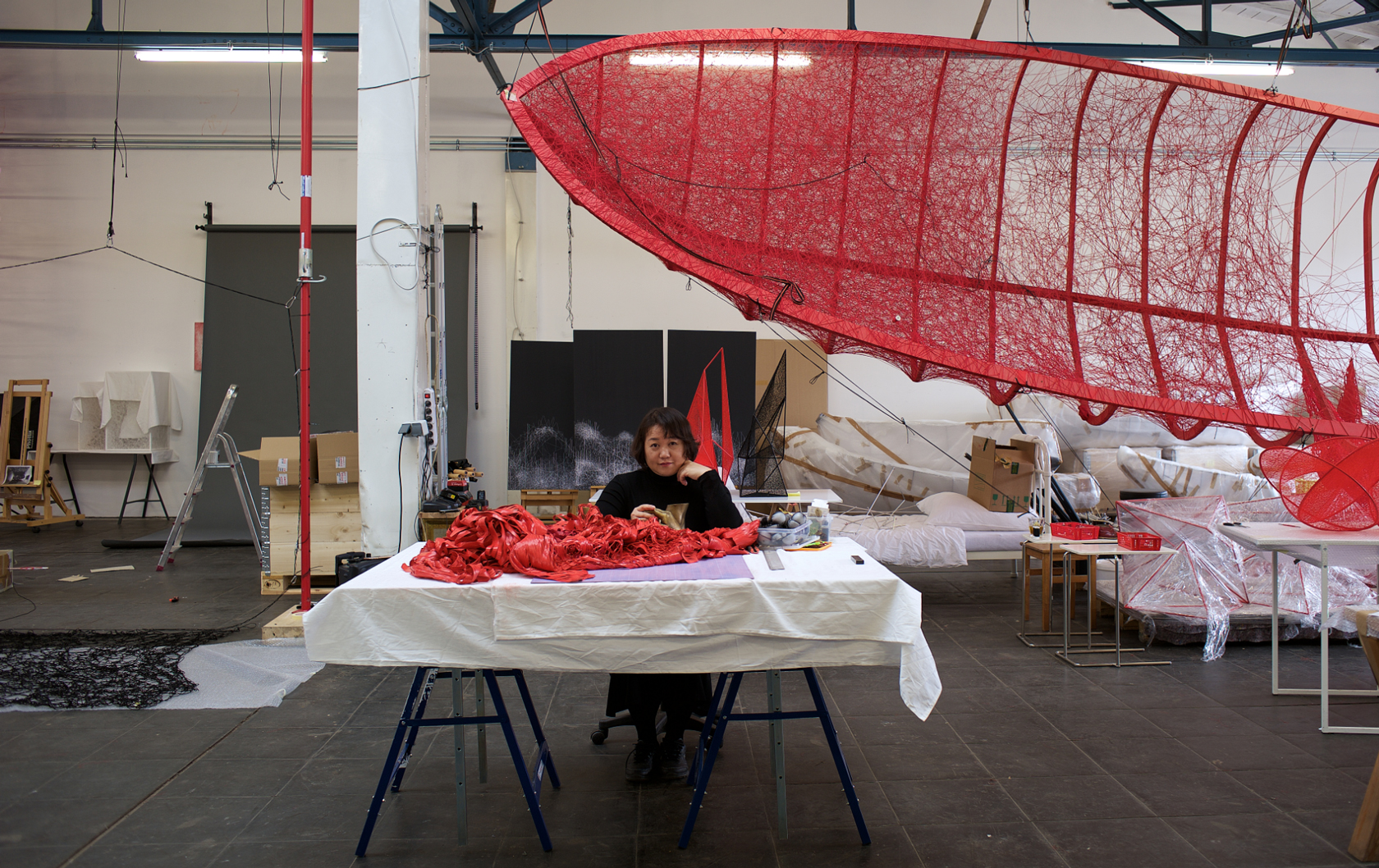
Chiharu Shiota’s installations, often involving everyday objects entangled in a sea of blood-red, black or white yarn, leave a searing impression in the minds of viewers; not only for their exceptional beauty, but also because of the poignant way in which they represent personal narratives, and articulate complex feelings of longing and loss.
Representing Japan at the 2015 Venice Biennale, Shiota created The Key in the Hand, dangling 50,000 metal keys, collected from around the world, in a colossal red web above two wooden boats – a poetic metaphor for the distillation of individual experiences into collective memory. Catapulted to international renown, she has since staged solo exhibitions on five continents – including memorable takeovers of Berlin’s Nikolaikirche (2017) and the Yorkshire Sculpture Park Chapel (2018), and a 2019 retrospective that became the second-most-visited show in the history of Tokyo’s Mori Art Museum. Her output also extends to sculpture, video performance and even set design for prominent theatrical and operatic productions, the demand for which will only grow. We reached her, via email, at home in Berlin to talk about being liberated from the world of painting, the stories concealed within mundane objects, the joys of ephemeral installations, and art as a life-giving force.
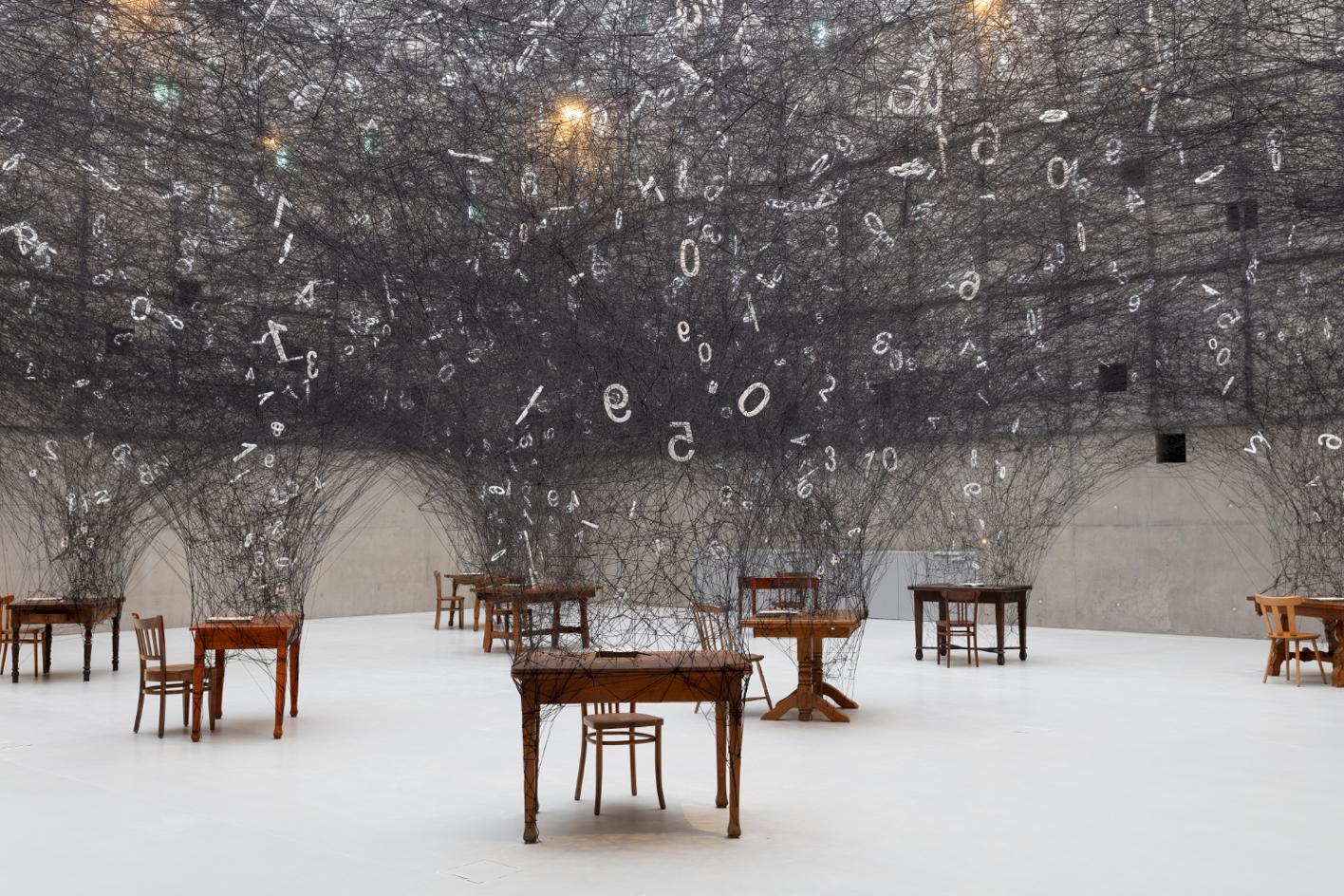
Counting Memories, 2019, a site-specific installation for the Muzeum Śląskie w Katowicach in Katowice, Poland that invited viewers to reflect on the way history is collected through numbers
Wallpaper*: Where are you as we speak?
Chiharu Shiota: I am sitting at my desk at home. Luckily, my home is also my atelier. I have been drawing and working a lot. One of my cats has come to visit me. I have two of them, they are brothers. They always want to sit on my drawings, which is why I have an empty box next to my desk, so they sit inside the box instead of on my work. They always want to be the centre of attention. The window is open, and I can hear a train go by. All the trees outside my window are green now.
W*: How has your background in painting influenced your performances and installations?
CS: During my second year of studying painting, I felt that I could not continue. Painting did not mean anything to me anymore. This art skill has such a rich history, but I had a feeling that it’s not part of my history. Then one night, I had a dream that I was inside a two-dimensional painting. I could not breathe because of the oil paint pouring on me. This inspired me to create Becoming Painting. It was an act of liberation, and I understood that I could create art with my body.
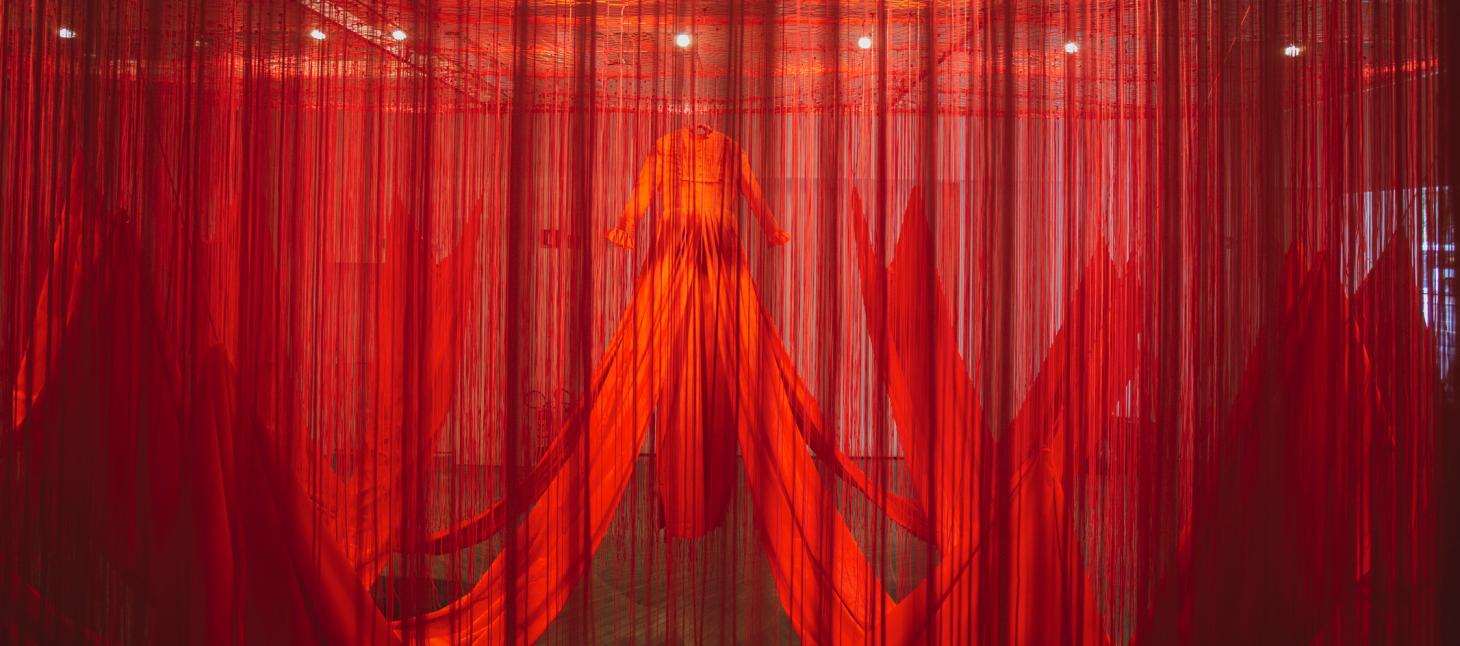
Internal Line, 2019, for Japan House São Paulo, inspired by a Japanese folk belief that a red thread is tied to the little finger of each newborn, symbolising the extension of blood. Throughout life, this invisible thread intertwines with someone else’s thread, in some way that will deeply impact their paths.
W*: Originally from Japan, you have been based in Berlin for more than two decades. How has the experience of different places and cultures shaped you as an artist?
CS: When I was living in Japan, I did not think about my cultural identity. But after moving to Germany, I met many people from different countries, and I began to reflect on my own heritage. I like to explain this experience with a metaphor. It is like pouring salt into a glass and adding water. When I lived in Japan, I was like the glass of water, but when I moved to Germany the water evaporated and the salt crystallised. Everything became crystal clear and I understood myself better.
W*: You are known for artworks that offer meditations on mortality and afterlife. How has your relationship to the subject evolved over your career, and especially during the current pandemic?
CS: All my work is inspired by my life or by a personal emotion. I try to expand this emotion into something universal to connect with others. I have tried to express emotions in my art that I would never be able to explain. In the past, I have had to overcome some serious medical conditions, and creating art has helped me to survive. The current situation has also inspired me to work with new materials. Life will continue to push me.
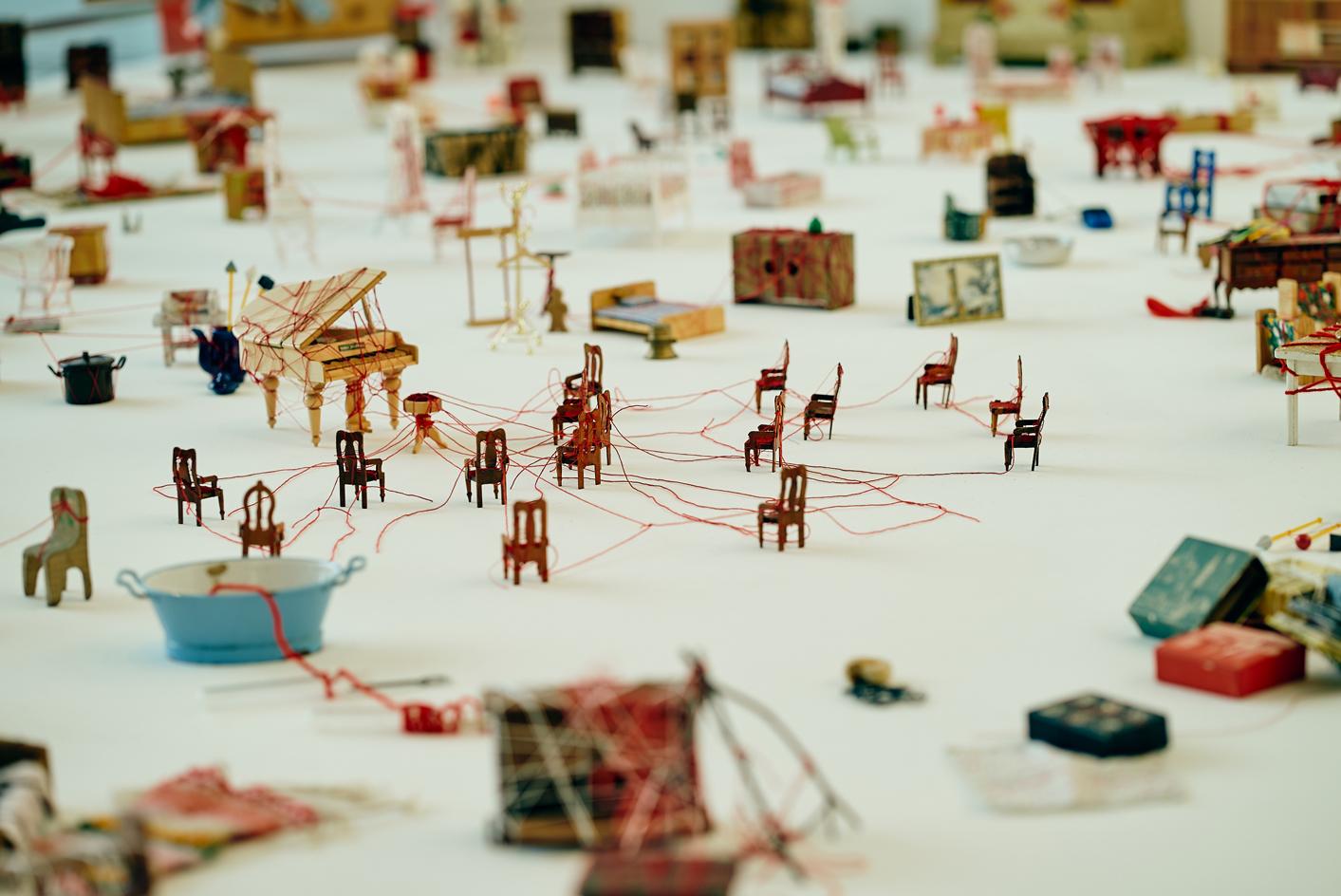
Connecting Small Memories, 2019, a mixed media installation at the Busan Museum of Art, involved numerous pieces of dollhouse furniture interwoven with red yarn.
RELATED STORY
W*: You have built installations from day to day objects: keys, luggage and window frames, to name a few. What did you find persuasive about these objects, and how do you incorporate them in your art?
CS: Many years ago, I bought some old suitcases at a flea market in Berlin. When I opened them at home, I could feel the existence of the previous owner. Even though I never met them, I could feel their presence. I believe the objects that surround us accumulate our existence. When I leave my bed in the morning, you can see traces of my body in the sheets.
W*: What draws you to the idea of creating ephemeral installations that are delicate in construction, and often have to be taken apart rather than preserved after each show?
CS: The single line of thread is like a line in a painting. With the thread I am drawing in the air, in an unlimited space. With the material I can create new spaces. They might be deconstructed after the exhibition, but they will live in the memory of the visitors forever.
Wallpaper* Newsletter
Receive our daily digest of inspiration, escapism and design stories from around the world direct to your inbox.
W*: What has been your career highlight to date?
CS: It was a great honour to be asked to represent Japan at the 56th Venice Biennale, in 2015. In addition, the exhibition ‘The Soul Trembles’ at the Mori Art Museum in Tokyo last year, which was the most comprehensive presentation of my work to date. There were photographs, sculptures, photographs of my stage designs and six large-scale installations, spanning 25 years. It was wonderful to see all my work in one place. The exhibition has toured to the Busan Museum of Art in South Korea and will continue to travel to Australia, Taiwan and Jakarta in the coming years.
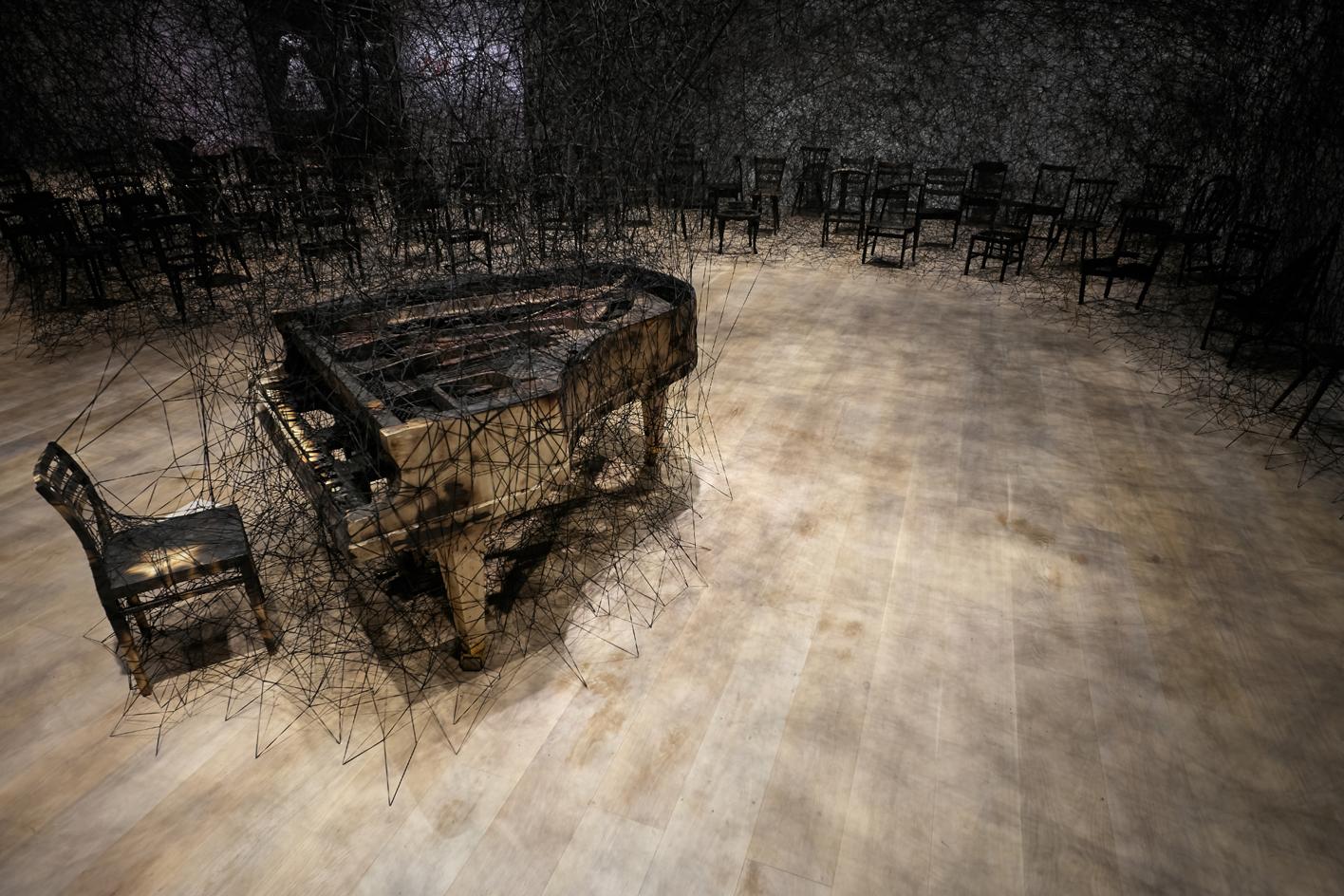
In Silence, 2019, at the Mori Art Museum in Tokyo, consisting of a black Alcantara thread emanating from a burnt piano and chair. As a child, Shiota had witnessed a fire that reduced a neighbour’s house down to a charred piano. She has since employed the motif in multiple artworks including her installation for the Yorkshire Sculpture Park chapel.
W*: What upcoming projects are you most looking forward to?
CS: My next solo exhibition will be ‘Inner Universe’ at Galerie Templon in Paris, opening 30 May, featuring works that focus on the body. Unfortunately, I won’t be able to attend, but I am looking forward to seeing people view my work again. There are also projects being prepared in South Korea, China and Japan that we haven’t yet officially announced. I will also have my first solo show at König Galerie in Berlin in the beginning of 2021. I am looking forward to transforming the gallery.
W*: Has the recent experience of lockdown prompted you to discover new themes for your work, or revisit old projects that you didn’t have time for?
CS: I have been drawing a lot at home. My drawings are inspired by life, and this situation has made me very creative. I always travel to install my exhibitions, but since this is not possible at the moment and will become more difficult in future, I have to rethink my work. While in my studio, I have been working on projects that can be shipped to the museum or gallery and installed without my presence.
W*: What’s the most interesting thing you’ve read or listened to in the past few weeks?
CS: I have watched many TED Talks in the past weeks. I have difficulties speaking in front of crowds, and I think it helps to watch these presentations. There are many fascinating topics: Guy Winch’s talk on ‘Emotional First Aid’ was very good. He talks about how we favour the body over the mind, and what consequences this has. I recommend watching it.

Beyond Memory, 2019, installed in the atrium of Berlin’s Martin-Gropius-Bau, suspended historic documents from the museum within 780km of white yarn. ‘I have created a cloud of thoughts, and connectings, binding the viewer to the past and the future,’ Shiota says.

Circulation, 2018, an installation of metal rings and red wool at the 16th-century Fort St Elmo in Valletta, Malta. Unusual in its metal construction, the installation represented the vortex of connections between Malta and its people.
INFORMATION
chiharu-shiota.com; koeniggalerie.com
‘Chiharu Shiota: Inner Universe’, 30 May–25 July 2020, Galerie Templon. templon.com
ADDRESS
Galerie Templon
28 rue du Grenier Saint-Lazare
75003 Paris
TF Chan is a former editor of Wallpaper* (2020-23), where he was responsible for the monthly print magazine, planning, commissioning, editing and writing long-lead content across all pillars. He also played a leading role in multi-channel editorial franchises, such as Wallpaper’s annual Design Awards, Guest Editor takeovers and Next Generation series. He aims to create world-class, visually-driven content while championing diversity, international representation and social impact. TF joined Wallpaper* as an intern in January 2013, and served as its commissioning editor from 2017-20, winning a 30 under 30 New Talent Award from the Professional Publishers’ Association. Born and raised in Hong Kong, he holds an undergraduate degree in history from Princeton University.
-
 Put these emerging artists on your radar
Put these emerging artists on your radarThis crop of six new talents is poised to shake up the art world. Get to know them now
By Tianna Williams
-
 Dining at Pyrá feels like a Mediterranean kiss on both cheeks
Dining at Pyrá feels like a Mediterranean kiss on both cheeksDesigned by House of Dré, this Lonsdale Road addition dishes up an enticing fusion of Greek and Spanish cooking
By Sofia de la Cruz
-
 Creased, crumpled: S/S 2025 menswear is about clothes that have ‘lived a life’
Creased, crumpled: S/S 2025 menswear is about clothes that have ‘lived a life’The S/S 2025 menswear collections see designers embrace the creased and the crumpled, conjuring a mood of laidback languor that ran through the season – captured here by photographer Steve Harnacke and stylist Nicola Neri for Wallpaper*
By Jack Moss
-
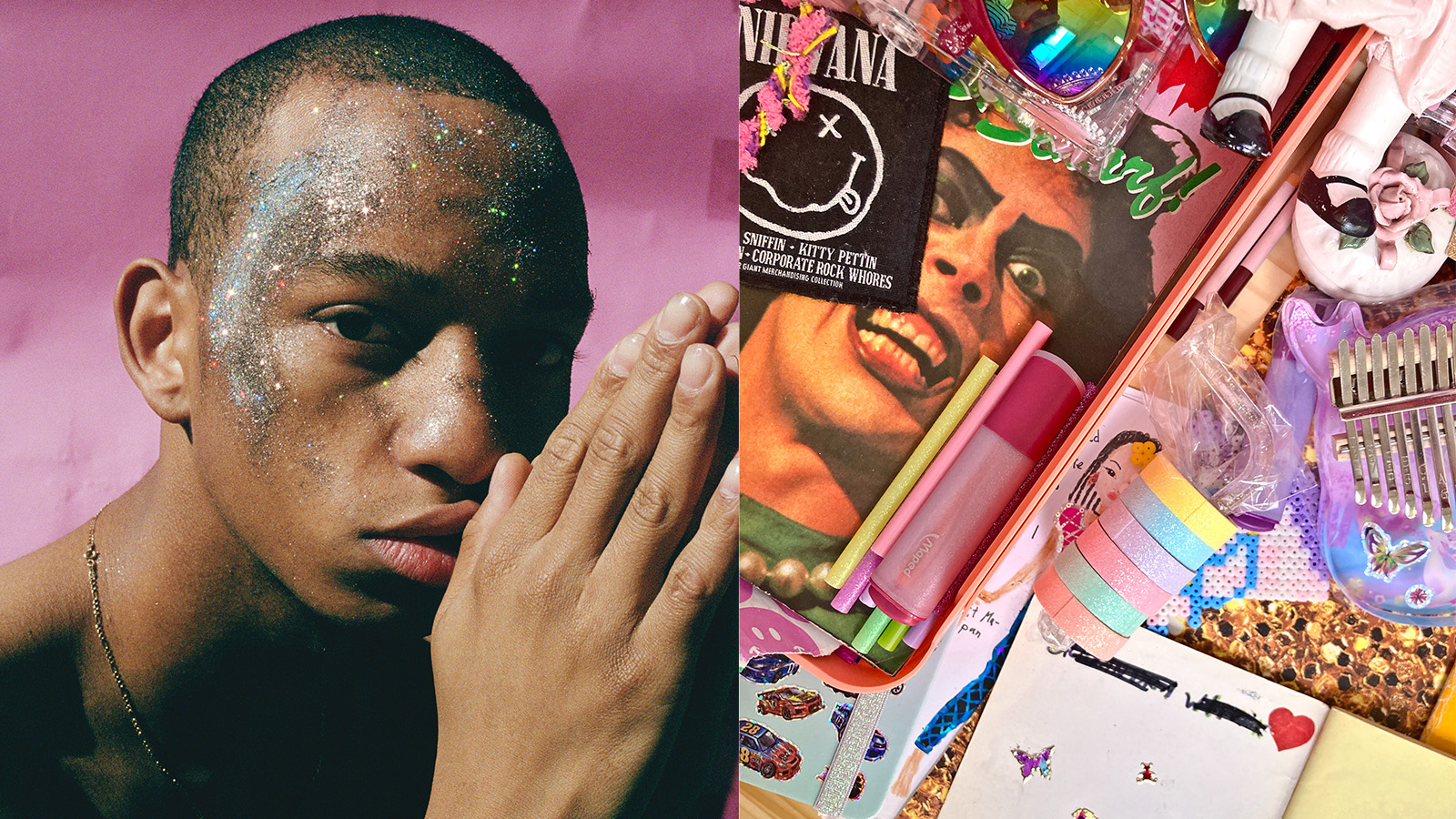 MK&G’s ‘Glitter’ exhibition: a brilliant world-first tribute to sparkle and spectacle
MK&G’s ‘Glitter’ exhibition: a brilliant world-first tribute to sparkle and spectacleMK&G’s latest exhibition is a vibrant flurry of sparkles and glitter with a rippling Y2K undercurrent, proving that 'Glitter is so much more than you think it is'
By Hiba Alobaydi
-
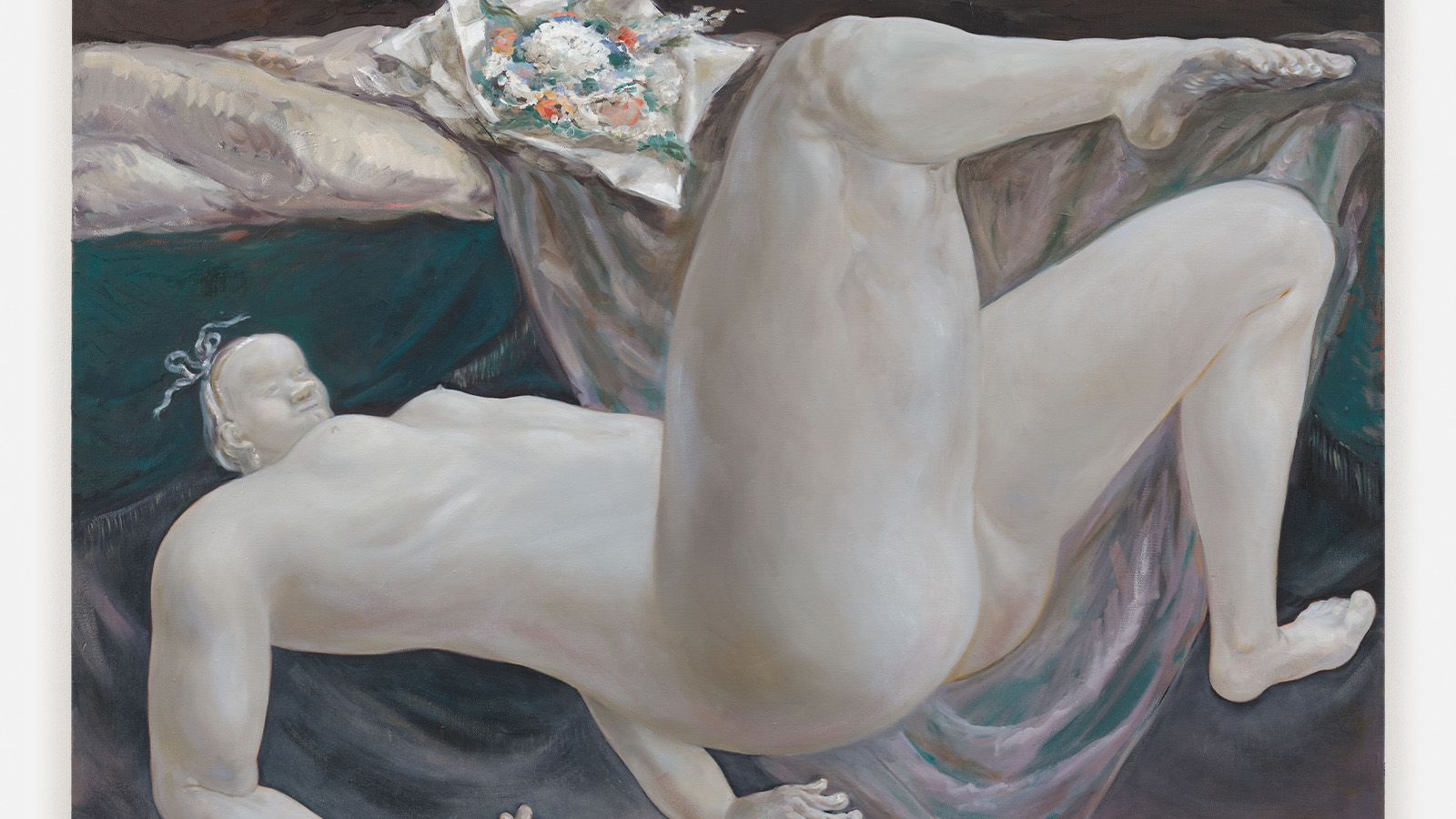 Louise Bonnet’s falling figures depict an emotional narrative to be felt rather than told
Louise Bonnet’s falling figures depict an emotional narrative to be felt rather than toldLouise Bonnet’s solo exhibition 'Reversal of Fortune' at Galerie Max Hetzler in Berlin, nods to historical art references and the fragility of the human condition
By Tianna Williams
-
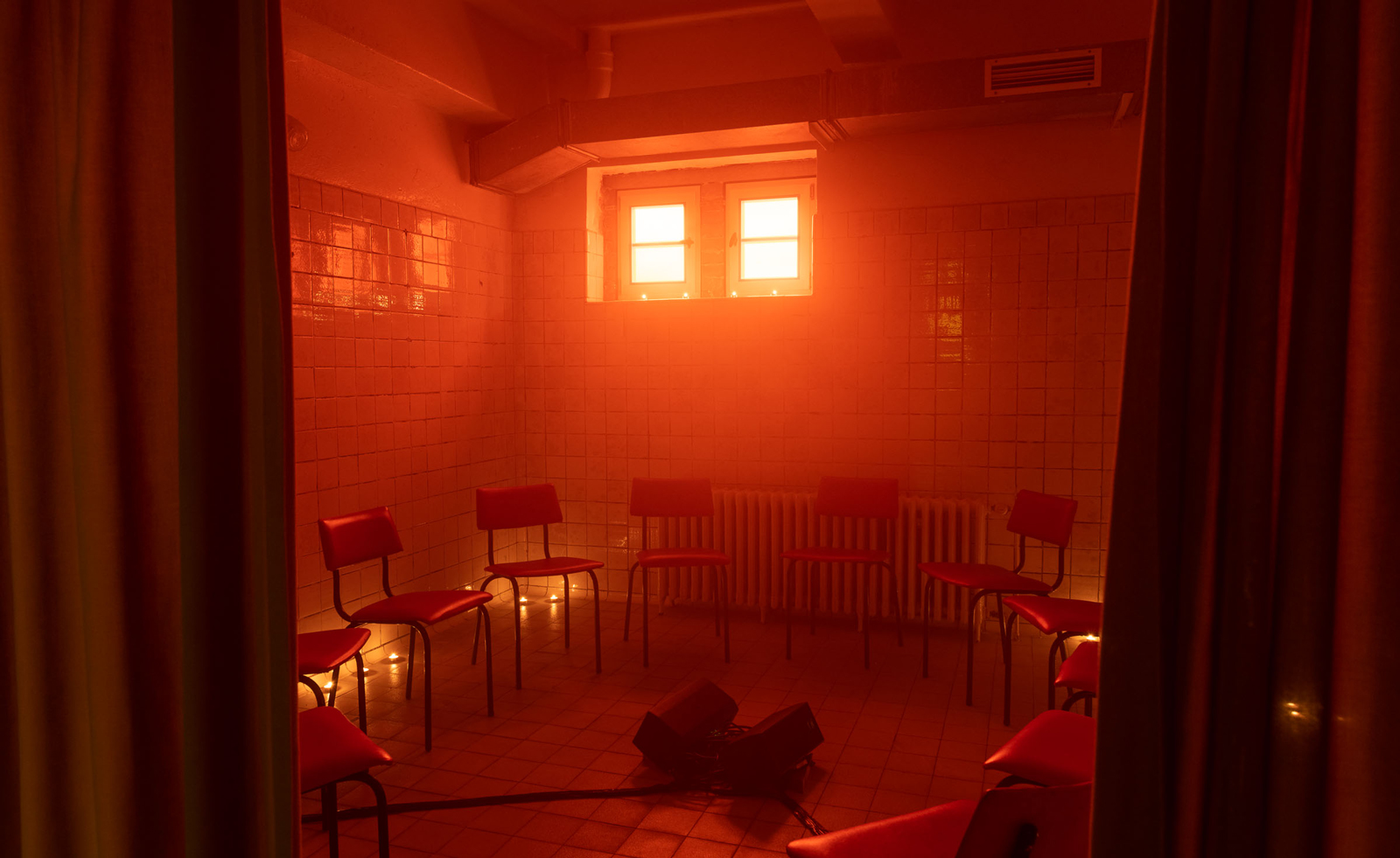 Inside E-WERK Luckenwalde’s ‘Tell Them I Said No’, an art festival at Berlin's former power station
Inside E-WERK Luckenwalde’s ‘Tell Them I Said No’, an art festival at Berlin's former power stationE-WERK Luckenwalde’s two-day art festival was an eclectic mix of performance, workshops, and discussion. Will Jennings reports
By Will Jennings
-
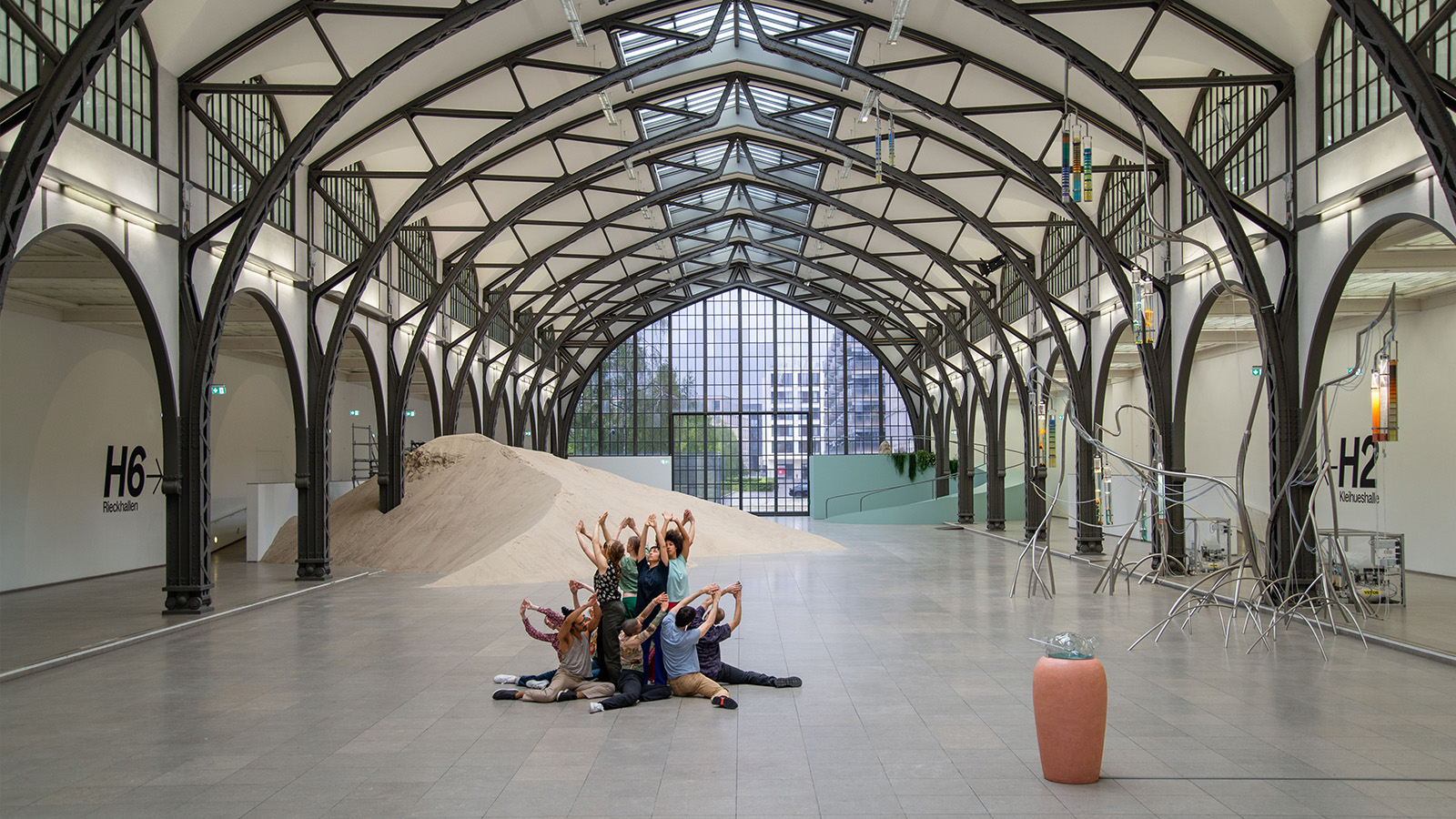 Alexandra Pirici’s action performance in Berlin is playfully abstract with a desire to address urgent political questions
Alexandra Pirici’s action performance in Berlin is playfully abstract with a desire to address urgent political questionsArtist and choreographer Alexandra Pirici transforms the historic hall of Berlin’s Hamburger Bahnhof into a live action performance and site-specific installation
By Alison Hugill
-
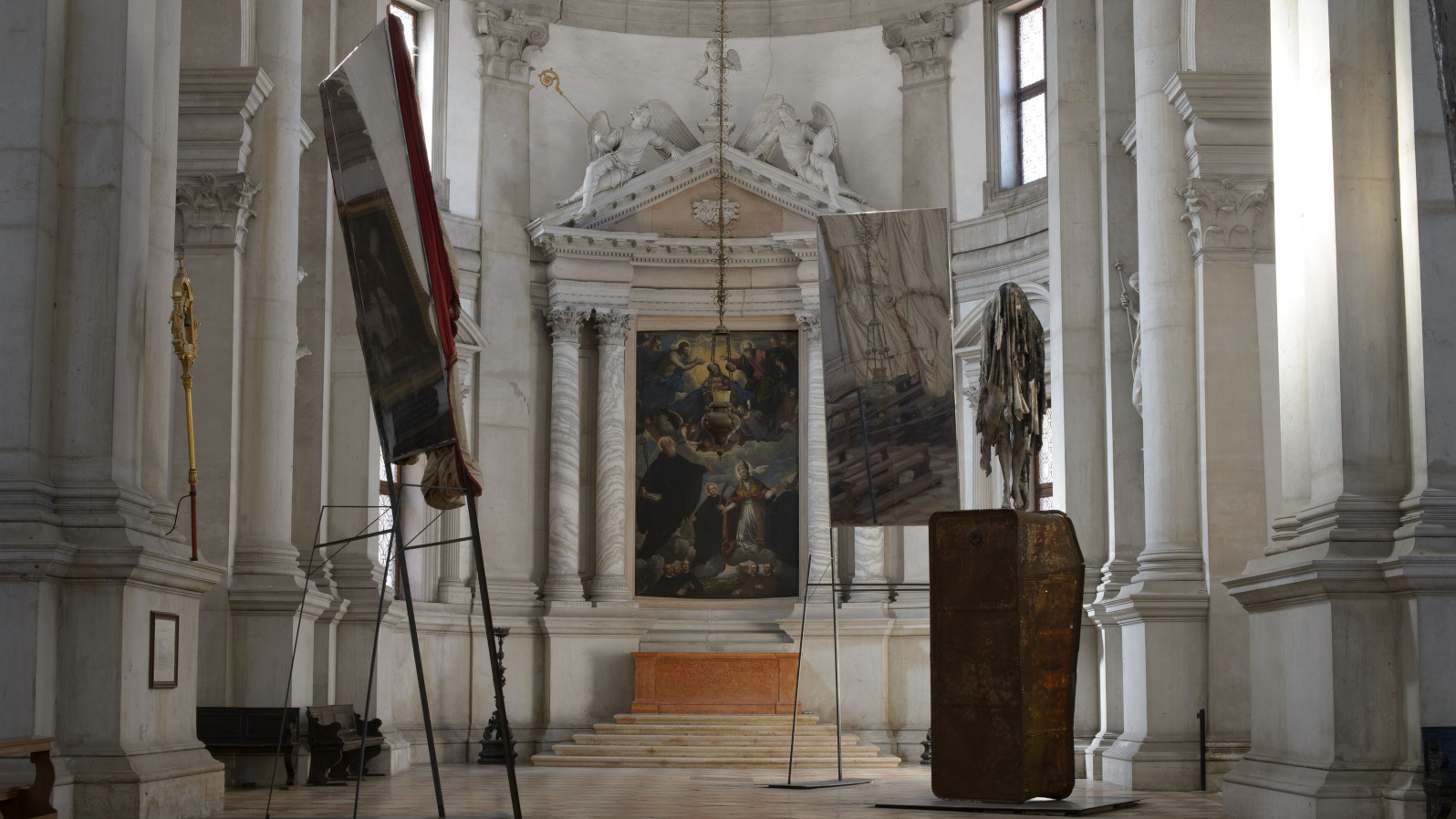 Berlinde De Bruyckere’s angels without faces touch down in Venice church
Berlinde De Bruyckere’s angels without faces touch down in Venice churchBelgian artist Berlinde De Bruyckere’s recent archangel sculptures occupy the 16th-century white marble Abbazia di San Giorgio Maggiore for the Venice Biennale 2024
By Osman Can Yerebakan
-
 Lawrence Lek’s depressed self-driving cars offer a glimpse of an AI future in Berlin
Lawrence Lek’s depressed self-driving cars offer a glimpse of an AI future in BerlinLawrence Lek’s installation ‘NOX’, created with LAS Art Foundation, takes over Berlin’s abandoned Kranzler Eck shopping centre
By Emily Steer
-
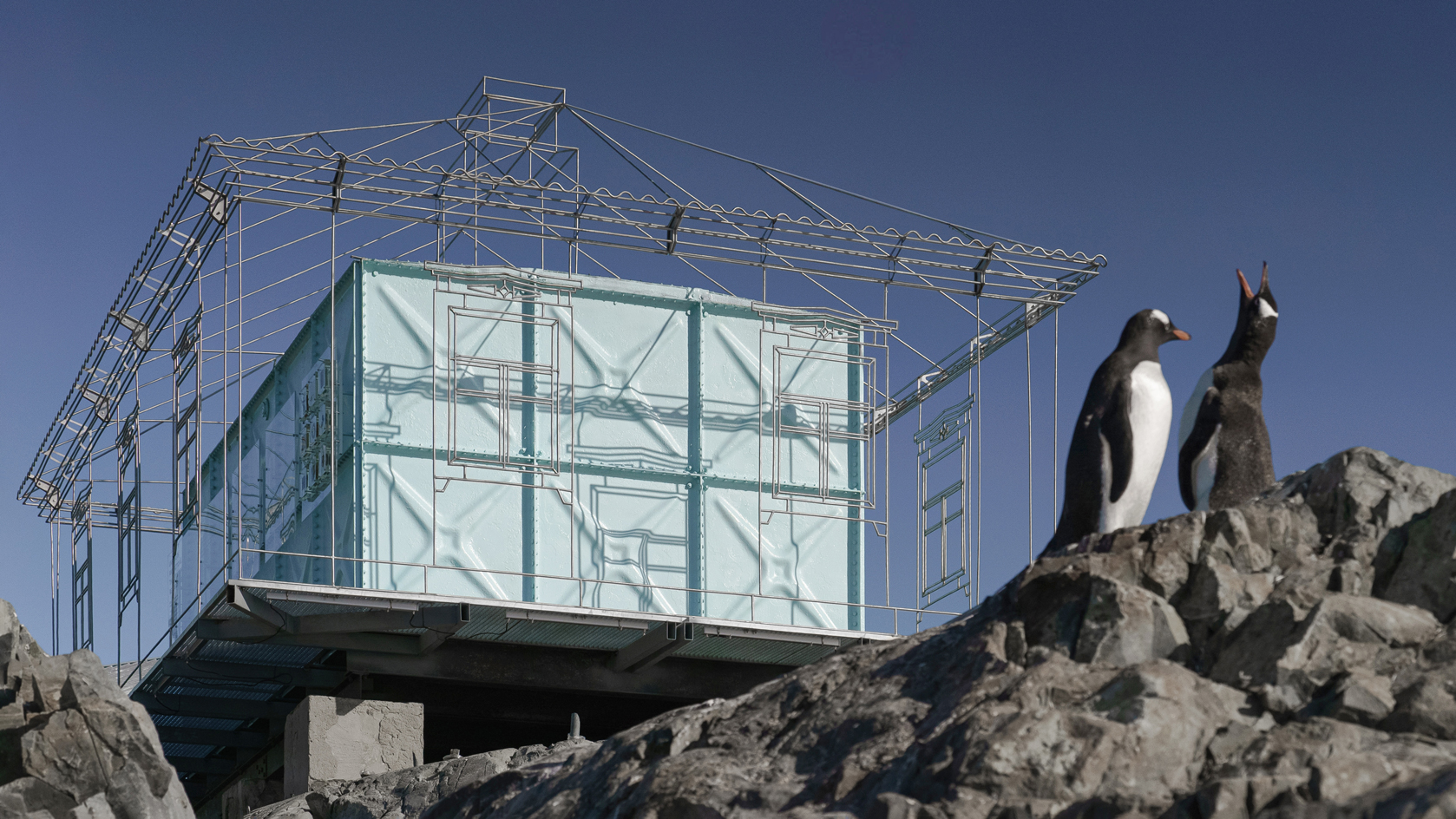 Remote Antarctica research base now houses a striking new art installation
Remote Antarctica research base now houses a striking new art installationIn Antarctica, Kyiv-based architecture studio Balbek Bureau has unveiled ‘Home. Memories’, a poignant art installation at the remote, penguin-inhabited Vernadsky Research Base
By Harriet Lloyd-Smith
-
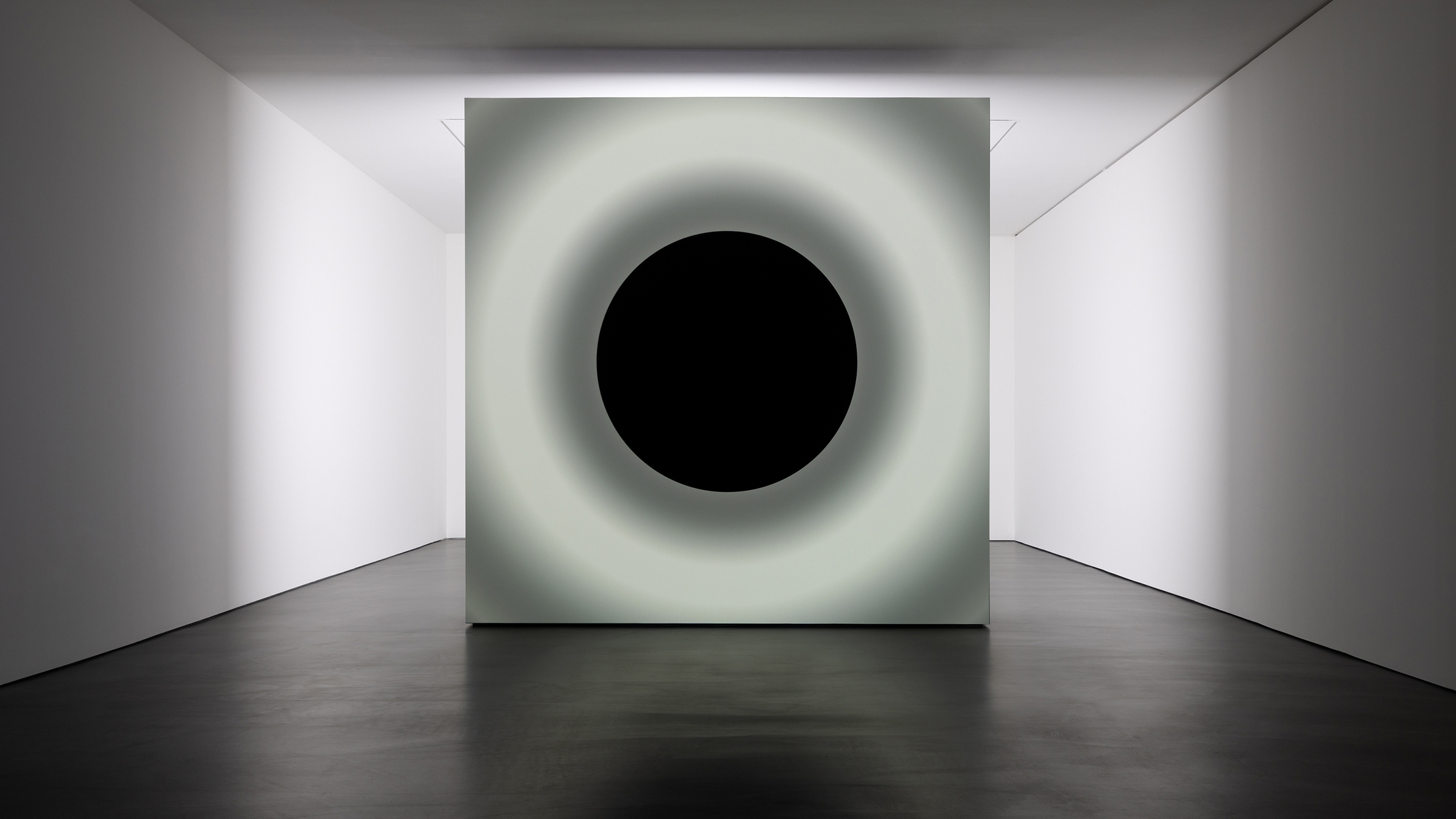 Ryoji Ikeda and Grönlund-Nisunen saturate Berlin gallery in sound, vision and visceral sensation
Ryoji Ikeda and Grönlund-Nisunen saturate Berlin gallery in sound, vision and visceral sensationAt Esther Schipper gallery Berlin, artists Ryoji Ikeda and Grönlund-Nisunen draw on the elemental forces of sound and light in a meditative and disorienting joint exhibition
By Harriet Lloyd-Smith
